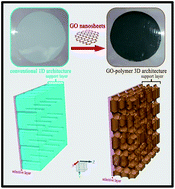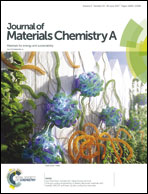Three-dimensional architecture constructed from a graphene oxide nanosheet–polymer composite for high-flux forward osmosis membranes†
Abstract
Forward osmosis (FO) membrane technology holds significant potential to address the global challenges in sustainable water and energy supply. The development of FO membranes possessing a three-dimensional (3D) architecture with interconnected channels in their support layers remains exceedingly desirable and challenging to overcome the intrinsic internal concentration polarization (ICP) bottleneck in FO water flux. For the first time, a novel 3D interconnected porous architecture is constructed using a graphene oxide (GO) nanosheet–polymer composite via a facile and economic phase-inversion approach, and the as-synthesized GO-polymer 3D architecture is successfully used as the support layer of an FO membrane. This GO-polymer 3D architecture provides shortcut pathways for water molecules to readily pass through, which minimizes support layer tortuosity to 1.55 ± 0.13 (one of the best values in the literature). The minimization of tortuosity significantly reduces the support layer structural parameter and thereby effectively mitigates ICP. As a result, the FO water flux (JW) of the membrane with the GO-polymer 3D architecture reaches 18.3 ± 1.5 L m−2 h−1 (salt rejection: 94.8% ± 1.2%), which is 73% higher than the JW of the membrane with the conventional 1D architecture and 280% times higher than the JW of the commercial HTI CTA FO membrane under the same operating conditions. More importantly, the mechanism for the formation of this 3D architecture is carefully revealed by developing a new theory, i.e. GO-induced phase inversion, for the architecture transformation process. Through systematic study of the 2D GO nanosheets and traditional 0D/1D nanomaterials as membrane building blocks, the unique role of the 2D structural characteristics of GO in forming this 3D membrane architecture is unveiled. This study opens a new door for the construction of 3D architectures using 2D nanomaterials for the development of high performance membranes.



 Please wait while we load your content...
Please wait while we load your content...